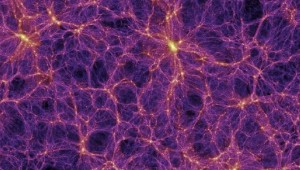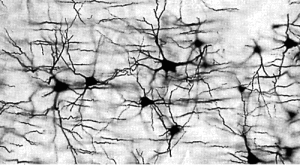“Evolution occurs in a cosmic context, on a planet under a star, so terrestrially evolved brains are well equipped to construct a rich and accurate cosmological story… the Universe has, in a sense, made us in its own image – meaning we’ve evolved with a natural ability to understand Nature… We’re descended from stars… and evolving within Nature has shaped our intuition in such a way that we can comprehend the cosmological story. In a sense, we’re children of Nature, at home in the Universe.”
– Mark Whittle, Professor of Astrophysics, University of Virginia
To bring up the topics of spirituality and religion in any cross-section gathering of contemporary society is the proverbial can of worms. To intersect science and religion in the conversation spills the can on to the floor. And to throw politics into the mix can set off a riot. We have a very difficult time talking with each other concerning these topics; we rather have the tendency to talk at each other – vigorously, and at times, violently.
A big part of why these topics invoke such energy and argument is because they are conversations into suppositions about truth; they are even stabs at absolute Truth, and what can be more important? Religion is the discussion of the origin, meaning and destiny of existence, and the manner in which these beliefs are institutionalized, with a related conversation concerning ethics thrown in, all in mythic, subjective language. Science also addresses the origin, meaning and destiny of existence, but the emphasis is on the observable, measurable, and quantifiable, in objective language. The social sciences – philosophy, psychology, anthropology, sociology and political science – attempt the same, but since the topics are so subjective, objectivity is very difficult. The ethics conversation is also of great importance in these scientific discussions, although often not as vigorously applied as it ought to be.
A big part of the problem lies in the failure of religion and science to recognize that they really need to be converging rather than splintering the conversation. We’re caught in our typically human dualistic conundrum of “either-or.” Somehow the simple observation that the discussion concerning the truth of the way things are has to be a single conversation eludes us. The truth has to be the truth, applicable universally. As a saying that has emerged in recent political conversation goes: “Everyone is entitled to their own opinion, but no one is entitled to their own facts,” yet that seems to be what happens as contradictory opinions are presented as if they are facts.
The history of humanity’s conversation about truth has been plagued by a recurring theme where belief, that is, a story about the way things are as we imagine it, keeps getting substituted for the way things actually are. Dogma gets foisted as fact. Metaphor is arguing with metaphor. Trouble is sure to ensue.
Buddhism has taken a very constructive approach to this problem for thousands of years. Certainly debates amongst Buddhists occur, but Buddhism, from its very origins has been able to keep these debates rather civil by noticing that dogma is the bane of truth and cautions against confusing the way we think things are from the way they really are. The very important Buddhist concept of “emptiness” actually allows that all things are empty of absolute nature because we only have a picture of reality as our minds create it. It allows that everyone is free to have their own opinion, but these opinions ought not be foisted off on anyone else. Rather, every opinion, every point of view must be examined very carefully over and over again with the fullest application of all human faculties of observation and understanding to ever-improve our approximation of what any phenomenon actually is. It also states that no phenomenon stands alone, rather always in infinite interconnectedness and interdependence with all phenomena, that there is no single phenomenon other than the Universe itself, beyond actual comprehension.
For years, Westerners attempting to understand Buddhism have surrendered to allowing it seems to be more a philosophy of life, a psychology, a study of mind, than a religion. The area of Buddhism that does clearly fall into the realms of religion are in its teachings concerning the non-material aspects of existence and about ethics. Here too, however, whereas the major world religions seem to teach perspectives of exclusion and judgment, Buddhism teaches inclusion, insight, investigation and tolerance. The Dalai Lama has even made a very great point of saying that where scientific and modern understanding demonstrate error in Buddhist teaching, it is the religious teaching that ought to bow and give way. With this open, searching, non-dogmatic, even non-dualistic perspective as central to Buddhism, I find it best to consider Buddhism, rather than a religion, a cosmology, the field of exploration that seems to me to be open and integrative, to contain the domains that have been compartmentalized into spirituality, religion, philosophy, science and even politics as basically one gestalt.
As we are at a critical historical moment in Humanity’s evolution where divisive dogmas and interests are threatening to tear apart not only the social fabric, but the ecologic fabric of life on the planet Earth, we very much need to bring a new conversation into our exploration of the truth of the way things are that is open, integrative and universal. We need to move humanity forward into a future that is clearly and necessarily marked by expanding integration and unity as humanity understands more of its origins and place in the vastness of the stars, and that conversation, both religious and scientific, might be best served under the nomenclature of cosmology.
Cosmology is a particularly useful paradigm because it has always comfortably contained both myth and science, that is the intuitive-symbolic and the empirical-observational understanding, and that our best approximations of truth combine both of these human mental faculties. It is the explanation and exploration of the origin and nature of existence spanning everything from ancient creation myths to modern-day astrophysics and quantum physics. What is exceptionally exciting is that the world of physics, in both its intuitive theoretical dimension and its hard experimental science capacities for observation and measurement, are dovetailing into a new creation story. This new story can supersede the cosmological stories of the world’s religions, allowing them to bow, as the Dalai Lama suggests, to a new perspective that seems to integrate a great Universal intelligence, symbolically nomenclatured as the myriad names of “God,” with a story of consciousness as the evolutionary trait of humanity, of all the Universe for that matter, linking the material universe with the immaterial dimension of consciousness. Consciousness energy becoming and infusing material energy is a cosmological story thousands of years old. Only now, science is tremblingly close to proving it.
Interestingly, humanity is seemingly coming full circle. From Creation myths in antiquity explaining the immaterial dimension of the Godhead manifesting into the material world with humans as the God-head’s special and necessary link between the realms of symbolic consciousness and physical manifestation, to modern science realizing consciousness as an inherent property in all matter, only requiring a sufficiently complex coalescing of the great diversity of matter through evolutionary processes into a unified organism for consciousness-in-matter to be self-realizing. Human beings realizing consciousness as a product of the totality and the particular of the Universe is the completion of that circle.
 Dark matter web (3 billion sq. light year area)There is no contradiction between Creationism and evolutionary science. There is intelligent design, and the intelligence is inherent in the Universe itself. Modern science may be about to make the connection through discoveries in quantum physics, dark-matter, dark-energy and the Higgs-Boson field that the very complexity and connectedness that allows the immensely intricate organism that is a human brain to manifest consciousness just may be a micro-version of the true nature of the vastness of the Universe. It may be that we are created in God’s image, and the projection of that image, rather than being the physical appearance of a human being, is the vast web of neural connection that is the cerebral cortex of a human brain that is tantalizingly similar to
Dark matter web (3 billion sq. light year area)There is no contradiction between Creationism and evolutionary science. There is intelligent design, and the intelligence is inherent in the Universe itself. Modern science may be about to make the connection through discoveries in quantum physics, dark-matter, dark-energy and the Higgs-Boson field that the very complexity and connectedness that allows the immensely intricate organism that is a human brain to manifest consciousness just may be a micro-version of the true nature of the vastness of the Universe. It may be that we are created in God’s image, and the projection of that image, rather than being the physical appearance of a human being, is the vast web of neural connection that is the cerebral cortex of a human brain that is tantalizingly similar to  Human brain tissue neural network.what we understand of the web created by dark matter and dark energy, and gives rise to self-aware consciousness.
Human brain tissue neural network.what we understand of the web created by dark matter and dark energy, and gives rise to self-aware consciousness.
“Evolving within Nature has shaped our intuition in such a way that we can comprehend the cosmological story. In a sense, we’re children of Nature, at home in the Universe.” And so, it is time for us to stop arguing, to realize, as visionary Buckminster Fuller described, that we are the citizens of “space ship Earth.” That the Earth itself is an organism with a field of mind organized by the billions of individual minds in a single field of consciousness that is humanity, linked with all the consciousness of the trillions of fellow organisms sharing our journey through the Universe, to fulfill a destiny of Unity in individual diversity at home in the Universe. This is the new Cosmological story and conversation that I hope is only beginning.
